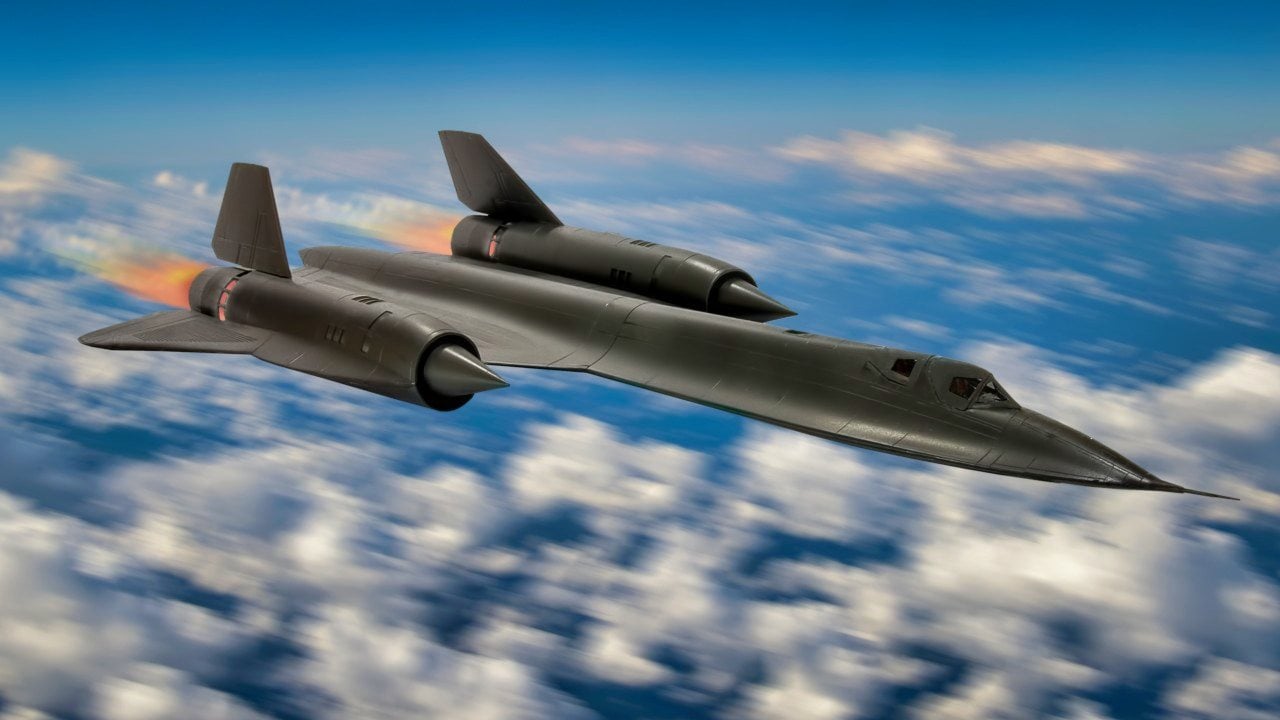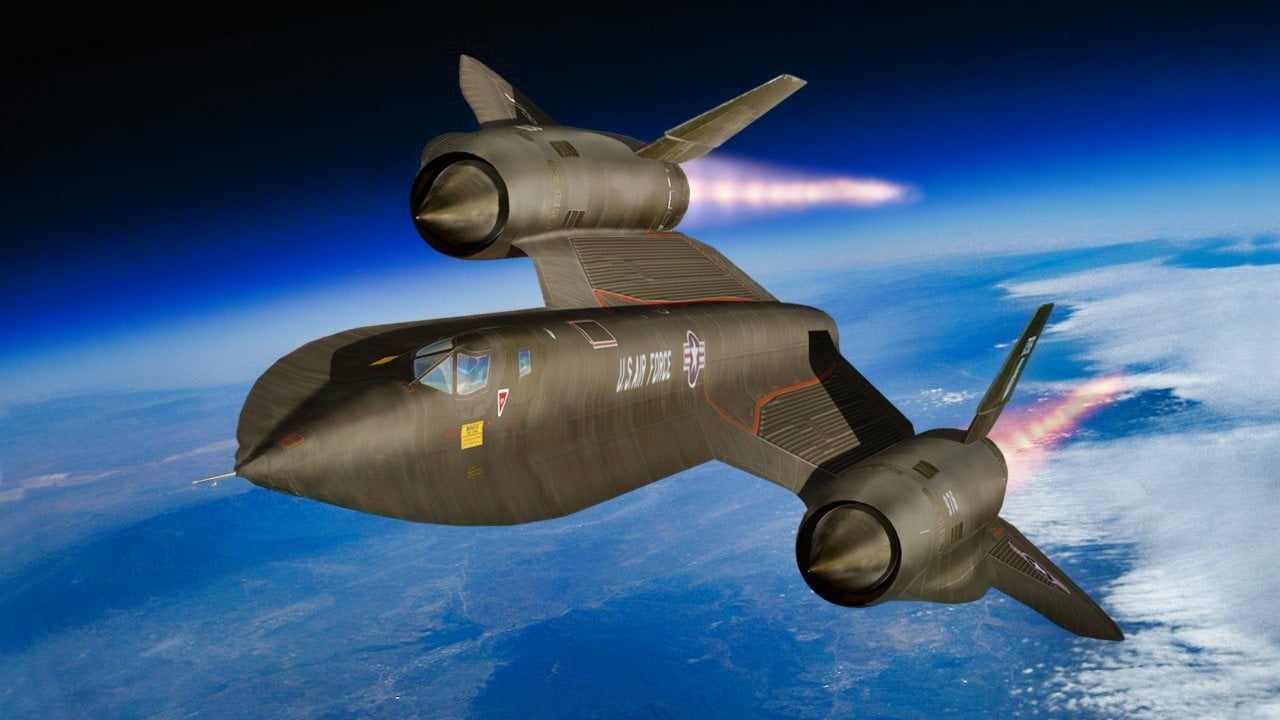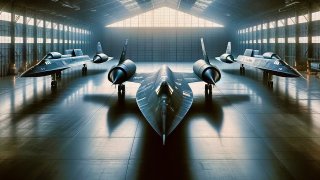SR-71 Blackbird: How the Fastest Plane On Earth Outran Missiles
The SR-71 Blackbird, developed during the Cold War to surpass the limitations of the U-2 spy plane, remains an iconic figure in aviation history. Initiated by the CIA to evade Soviet detection and missiles, the Blackbird excelled in strategic reconnaissance thanks to its unparalleled speed and altitude capabilities. With a record speed over Mach 3, it outmaneuvered enemy defenses and missiles, securing its place as the fastest manned aircraft.
Summary: The SR-71 Blackbird, developed during the Cold War to surpass the limitations of the U-2 spy plane, remains an iconic figure in aviation history. Initiated by the CIA to evade Soviet detection and missiles, the Blackbird excelled in strategic reconnaissance thanks to its unparalleled speed and altitude capabilities. With a record speed over Mach 3, it outmaneuvered enemy defenses and missiles, securing its place as the fastest manned aircraft. Despite advancements in spy satellites and drones leading to its retirement in the 1990s, the SR-71's legacy endures, marked by its innovative design, including reduced radar cross-section and heat-resistant materials. Its operational success over decades, without a single loss to enemy fire, underscores its exceptional contribution to aerial reconnaissance, though it was eventually superseded by unmanned technologies and remains a symbol of technological achievement in aviation.
A Plane Like No Other
The sleek and sinister SR-71 Blackbird looks like it belongs in a science fiction movie, though in fact the jet black spy plane proved far more successful at outrunning enemy missiles than any of the spaceships depicted in Star Wars. Though retired in the 1990s in favor of spy satellites and recon drones, it doesn’t look like any modern designs are likely to challenge the Blackbird’s record as the fastest manned aircraft ever.
The SR-71 Was a Stealthy Speedster
As Cold War tensions heightened during the 1950s, the CIA began flying the U-2 spy plane to keep tabs on the Soviet Union’s fast expanding nuclear weapons capabilities. Ungainly and relatively slow-moving, the U-2 relied upon its ability to fly at extremely high altitudes to avoid enemy fighters and early surface-to-air missiles.
The intelligence provided by U-2s in 1962 uncovered the Soviet nuclear missiles deployed to Cuba, leading to the dramatic events of the Cuban Missile Crisis. But the U-2s also provoked diplomatic incidents because they simply couldn’t fly high enough to avoid Russian missiles SA-2 surface-to-air missiles. A U-2 was shot down in 1960, and its pilot, Gary Powers, captured, triggering an embarrassing diplomatic row. Another U-2 was shot down during the Cuban Missile Crisis, killing the pilot and escalating tensions between Moscow and Washington at a critical moment. Five Taiwanese U-2s were shot down over China.
American engineers realized altitude was no longer an adequate defense and in 1957 began working on a plane for the CIA that they hoped Soviet radars would be unable to detect, and that could outrun any missiles fired at it. The Lockheed Skunkworks factory ultimately developed the A-12, codenamed “Archangel.” The prototype was first tested in Area 51 in 1962, and in the end fifteen A-12s were produced.
CIA A-12s flew a total of 29 spy missions over North Korea and Vietnam through 1968 in Operation Black Shield, losing six aircraft to accidents. Intelligence gathered by A-12 helped the CIA to map out North Vietnamese air defenses and located the U.S.S. Pueblo after it was hijacked by North Korea.
The Air Force developed prototypes of an interceptor version, the YF-12, and later considered a high speed bomber, the B-71 (coming numerically after the XB-70 Valkyrie bomber that never entered production). There was even a bizarre M-21 drone carrier that launched a D-21 spy drone off its back. However, none of these spinoffs entered service, and the A-12 was retired in favor of an Air Force operated variant, the SR-71.
The A-12 mounted a single high-resolution camera that recorded a broad swath of terrain directly underneath the aircraft. The Air Force wanted a longer-range version of the A-12 with better sensors that didn’t need to fly directly over hostile territory, particularly as an agreement reached with the Soviet Union that banned territorial overflight. This led to the two-seat SR-71A—the “SR” standing for Strategic Reconnaissance.
The SR-71 was actually slightly less stealthy and high-flying than the A-12, but had different intelligence-gathering technology. It mounted a side-looking airborne radar that mapped the ground below it, and also used two cameras that took images to either side, though at lower-resolution than the A-12’s larger camera. The Reconnaissance Systems Officer in the back seat operated the radar and assisted with navigation. Additionally, the Blackbird had an Electro-Magnetic Reconnaissance system that could detect and record signals traffic.
A total of 32 SR-71s were produced, including two SR-71B trainers and a single SR-71C prototype nicknamed “the Bastard” because of its unstable handling.
The Blackbird could sustain speeds above Mach 3, with a so far unbroken manned-flight record of Mach 3.3 or 3.5. (The 3.3 record is confirmed, while Mach 3.5 is claimed by pilot Brian Shul to have been achieved while outrunning a missile over Libya in 1986.) That speed is actually even more impressive than it seems, because while later Soviet MiG-25 and MiG-31 fighters could attain Mach 3, they could only do so for brief periods on afterburners, the aerial equivalent of an energy-burning sprint. The SR-71 could sustain Mach 3 flight for 90 minutes, at which points it required in-flight refueling. A Blackbird once set the record for flying from New York to London in 1 hour and 54 minutes.
In effect, by the time it took a SAM system could lock onto an SR-71 traveling at Mach 3 and launch a missile, the Blackbird was already moving beyond the effective range of the missile.
But Lockheed wasn’t just counting on speed to evade enemy missiles. The Blackbird was the first operational airplane intentionally designed with a reduced radar cross-section to minimize the chance of detection. The Blackbird’s chines—the knife-like tapered edges of the fuselage—were even coated with early radar-absorbent iron-ferrite paint to help lower radar detection ranges. The chines were also found to provide additional lift and greater aerodynamic stability.

However, the Blackbird wasn’t a stealth plane by modern standards—it had a cross section of 10 square meters—which Soviet radar technology soon proved capable of detecting anyway. Adding to the problem was the enormous heat-exhaust plumes the SR-71’s engines generated, which disrupted the air particles behind it in a manner visible to radar.
Fortunately, the Blackbird also mounted a radar jammer and other electronic countermeasures for confusing enemy missiles. To cap it all off, it was capable of sustained flight at 85,000 feet—another unbroken record—and employed an astro-inertial navigation system that used the stars overhead to calculate the plane’s position.
The Blackbird’s design reflected the fact that it was pushing the limits. The crew wore pressure suits like those used on space missions to withstand the high altitudes they were flying at, and were treated to a medical exam and a high-protein steak and egg meals before each mission. The SR-71’s J58 engines could only start through use of two vehicle-mounted V8 starter engines, and the triethylborane used in the fuel would belch green flames during ignition. The J58s would switch to a partial ramjet mode at high speeds, such that the SR-71 actually became more fuel efficient when it went faster.
However, when moving at high speeds for long periods of time, the friction generated by the air caused the exterior of the Blackbird to heat up to 500 degrees Fahrenheit or higher—and so the Blackbird was designed top to bottom to shed enormous heat without melting. The SR-71 was made 85% out of of titanium, a heat-resistant metal so hard it broke ordinary drill bits after making just 17 rivet holes, necessitating the development of specialized new tools. The windshields were made of pure quartz, and heavy duty air conditioning system dumped heat out of the cockpit. After landing, both flight and ground crew had to wait a good while for a Blackbird to cool down before they could even touch it.
The Blackbird consumed special JP-8 high-density jet fuel that had such a high combustion temperature, legend had it you could safely put out a match in it. The fuel was circulated through hundreds of small tubes in the fuselage to double as a heat sink. Blackbirds in photographs often appear a bit ‘shiny’ or wet in photos. That’s actually fuel leaking out of the tanks. Because metal expands at high temperatures, the metal plating of the Blackbird was designed purposefully loose to accommodate the expanding metal, leading to an intentionally leaky fuel tank. Once the SR-71 started flying at high speeds, the metal would heat up and expand several inches, sealing the fuel tank with the aid of a heat-released sealant. The Blackbird’s metal skin was also corrugated in parts to allow for metal expansion.

The Blackbird required multiple aerial refuelings for its missions. These were delivered by specialized KC-135Q tankers, which used a stabilized boom to refuel planes traveling at unusually high speeds, while the Blackbird’s special fuel was stored a separate tank.
An Impressive Record for the Blackbird
The first operational SR-71 unit was activated in 1968, based at Kadena Air Base in Okinawa, Japan. The locals nicknamed the recon birds Habu—“pit vipers”—a nickname which stuck amongst Blackbird pilots.
They went onto fly numerous reconnaissance missions over Vietnam. And while the plane performed well, it seems those who would want to take the plane down as the ultimate trophy were catching up.
American pilots soon discovered that the Blackbird’s reduced radar cross-section wasn’t an effective defense by itself–Russian-made radars were powerful enough to track the Habu and launch missiles. However, they learned that the SR-71’s speed did work as a defense.

